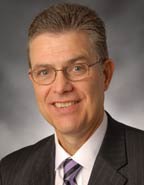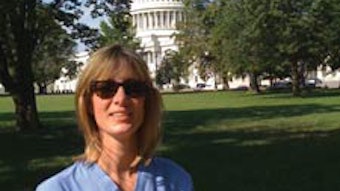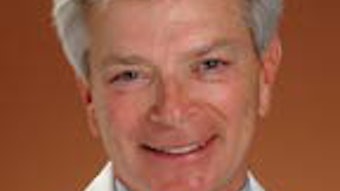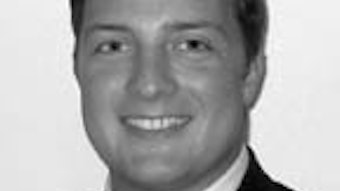ACOs: Pros and Cons for the Otolaryngologist
On March 31, 2011, the Centers for Medicare & Medicaid Services (CMS) and other Federal agencies released four documents relating to implementation of Section 3022 of the Affordable Care Act (ACA), which mandates the establishment of a new Medicare Shared Savings Program by January 1, 2012. The regulation on Accountable Care Organizations (ACOs) is a complex rule that is likely to change. Currently, it does not offer much guidance regarding how otolaryngologists will be integrated, and whether an otolaryngologist would even find it desirable to align with an ACO. An ACO is a practitioner/provider network under common governance that enters into a three-year (renewable) agreement with CMS to be held accountable for some of the cost and quality of care for a group of assigned Medicare beneficiaries. The ACO shares in some of the savings and absorbs some of the costs (in excess of certain thresholds) of providing Part A and Part B services to the assigned Medicare population, as compared with a benchmark determined by CMS. The amount of shared savings/losses depends on the ACO’s size, the model selected, and performance on quality measures. The CMS ACO model makes primary care providers (PCP) central to the program. Beneficiary assignment is based on the PCP from whom a Medicare beneficiary receives the plurality of his or her primary care services. Actual patient assignment is determined retrospectively based on who received care from the ACO and patients may opt in and out to obtain care. A PCP must be exclusive to one ACO, but specialists, such as otolaryngologists, can participate in multiple ACOs. An ACO may include specialists, but must include PCPs and be composed of at least 5,000 Medicare beneficiaries to be approved by CMS. In many cases, a patient may have minimal contact with an ACO PCP and yet may be considered an ACO patient, for whom the ACO is accountable in terms of care cost and quality. Conversely, an ACO specialist may provide numerous primary care services to a patient, and the patient may still not be considered an ACO patient. The patient assignment rule has the potential to effect referral to specialists. However, ACOs will need specialist participation and cooperation to achieve reduction of healthcare costs. To qualify as an ACO, the ACO must have in place (or create) a governing body representing all participants, including hospitals and physicians. To ensure clinical integration, a full-time medical director must be employed by the ACO and a quality assurance committee must be in place. Otolaryngologists may participate in ACOs as owners/members or as participating physicians. There are several pros and cons to participating in an ACO as owner/member: Pros • Potential shared savings • Provides a “seat at the table” in determining ACO policies and procedures • May decrease the likelihood of lost referrals Cons • Time commitment required • Liability risk for potential losses • May be required to sign exclusive contract The proposed rule provides for two “tracks” of possible shared savings. Within the one-sided model, the ACO accepts downside risk (i.e., the risk that the costs of caring for the assigned Medicare beneficiaries will be greater than the applicable threshold) only in Year 3 of the contract, but shares in only 50 percent of the savings. In the two-sided model, the ACO accepts downside risk during all three years of the ACO’s contract with CMS and is eligible for 60 percent of the savings share. The one-sided model is geared toward small physician practices and startup ACOs, not ACOs that have already been in existence, where less risk is involved. However, the one-sided ACO is eligible for less shared savings. Both models require reporting on quality measures. ACOs must report on 65 proposed quality measures across five key domains. ACOs that do not meet quality performance thresholds for all measures would not be eligible for shared savings, regardless of how much costs were reduced. In general, there is a lack of specialty measures and no quality measures unique to otolaryngology among the proposed list of measures. However, there are measures that are relevant to otolaryngology practice used by other physician groups, such as peri-operative and smoking cessation measures. CMS anticipates establishment and approval of 75 to100 ACOs over the next three years, which most likely means only large groups that are already in ACOs will qualify for the program and will slow adoption. The way the proposed requirements are currently written makes participation unattractive for small physician practices. The average upfront cost in the Physician Group Practice Demonstration (ACO predecessor) was $1.7 million. The Academy suggests that members become fully informed before signing contracts of participation. Efforts in the private market are also occurring around the provision of accountable care throughout the country so otolaryngologists need to be aware of what is happening in their local communities. The awareness and engagement will allow you to be an active participant and have a seat at the table if and when the time is right for partnering with ACOs.
 David R. Nielsen, MD, AAO-HNS/F EVP/CEO
David R. Nielsen, MD, AAO-HNS/F EVP/CEOOn March 31, 2011, the Centers for Medicare & Medicaid Services (CMS) and other Federal agencies released four documents relating to implementation of Section 3022 of the Affordable Care Act (ACA), which mandates the establishment of a new Medicare Shared Savings Program by January 1, 2012. The regulation on Accountable Care Organizations (ACOs) is a complex rule that is likely to change. Currently, it does not offer much guidance regarding how otolaryngologists will be integrated, and whether an otolaryngologist would even find it desirable to align with an ACO.
An ACO is a practitioner/provider network under common governance that enters into a three-year (renewable) agreement with CMS to be held accountable for some of the cost and quality of care for a group of assigned Medicare beneficiaries. The ACO shares in some of the savings and absorbs some of the costs (in excess of certain thresholds) of providing Part A and Part B services to the assigned Medicare population, as compared with a benchmark determined by CMS. The amount of shared savings/losses depends on the ACO’s size, the model selected, and performance on quality measures.
The CMS ACO model makes primary care providers (PCP) central to the program. Beneficiary assignment is based on the PCP from whom a Medicare beneficiary receives the plurality of his or her primary care services. Actual patient assignment is determined retrospectively based on who received care from the ACO and patients may opt in and out to obtain care. A PCP must be exclusive to one ACO, but specialists, such as otolaryngologists, can participate in multiple ACOs.
An ACO may include specialists, but must include PCPs and be composed of at least 5,000 Medicare beneficiaries to be approved by CMS. In many cases, a patient may have minimal contact with an ACO PCP and yet may be considered an ACO patient, for whom the ACO is accountable in terms of care cost and quality. Conversely, an ACO specialist may provide numerous primary care services to a patient, and the patient may still not be considered an ACO patient. The patient assignment rule has the potential to effect referral to specialists. However, ACOs will need specialist participation and cooperation to achieve reduction of healthcare costs.
To qualify as an ACO, the ACO must have in place (or create) a governing body representing all participants, including hospitals and physicians. To ensure clinical integration, a full-time medical director must be employed by the ACO and a quality assurance committee must be in place. Otolaryngologists may participate in ACOs as owners/members or as participating physicians. There are several pros and cons to participating in an ACO as owner/member:
Pros
| • | Potential shared savings |
| • | Provides a “seat at the table” in determining ACO policies and procedures |
| • | May decrease the likelihood of lost referrals |
Cons
| • | Time commitment required |
| • | Liability risk for potential losses |
| • | May be required to sign exclusive contract |
The proposed rule provides for two “tracks” of possible shared savings. Within the one-sided model, the ACO accepts downside risk (i.e., the risk that the costs of caring for the assigned Medicare beneficiaries will be greater than the applicable threshold) only in Year 3 of the contract, but shares in only 50 percent of the savings. In the two-sided model, the ACO accepts downside risk during all three years of the ACO’s contract with CMS and is eligible for 60 percent of the savings share. The one-sided model is geared toward small physician practices and startup ACOs, not ACOs that have already been in existence, where less risk is involved. However, the one-sided ACO is eligible for less shared savings. Both models require reporting on quality measures.
ACOs must report on 65 proposed quality measures across five key domains. ACOs that do not meet quality performance thresholds for all measures would not be eligible for shared savings, regardless of how much costs were reduced. In general, there is a lack of specialty measures and no quality measures unique to otolaryngology among the proposed list of measures. However, there are measures that are relevant to otolaryngology practice used by other physician groups, such as peri-operative and smoking cessation measures.
CMS anticipates establishment and approval of 75 to100 ACOs over the next three years, which most likely means only large groups that are already in ACOs will qualify for the program and will slow adoption. The way the proposed requirements are currently written makes participation unattractive for small physician practices. The average upfront cost in the Physician Group Practice Demonstration (ACO predecessor) was $1.7 million.
The Academy suggests that members become fully informed before signing contracts of participation. Efforts in the private market are also occurring around the provision of accountable care throughout the country so otolaryngologists need to be aware of what is happening in their local communities. The awareness and engagement will allow you to be an active participant and have a seat at the table if and when the time is right for partnering with ACOs.






